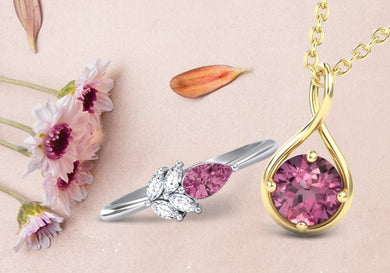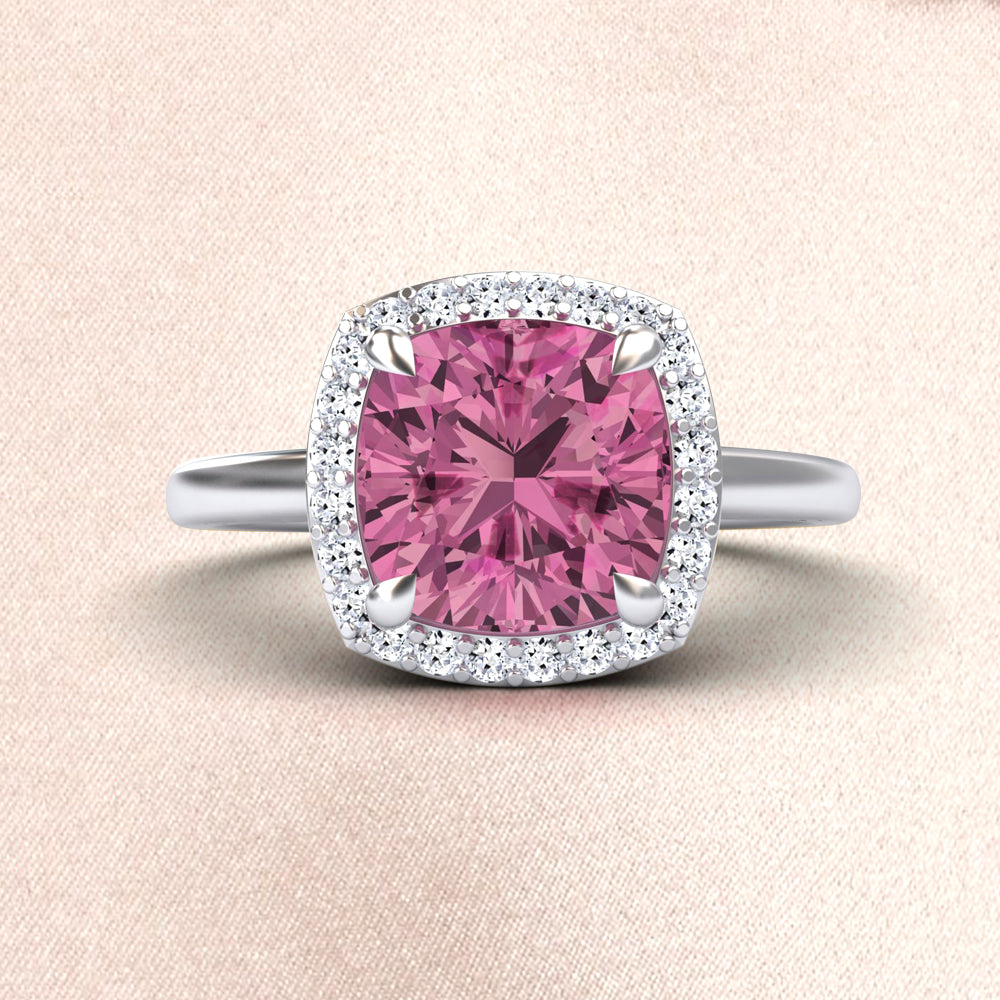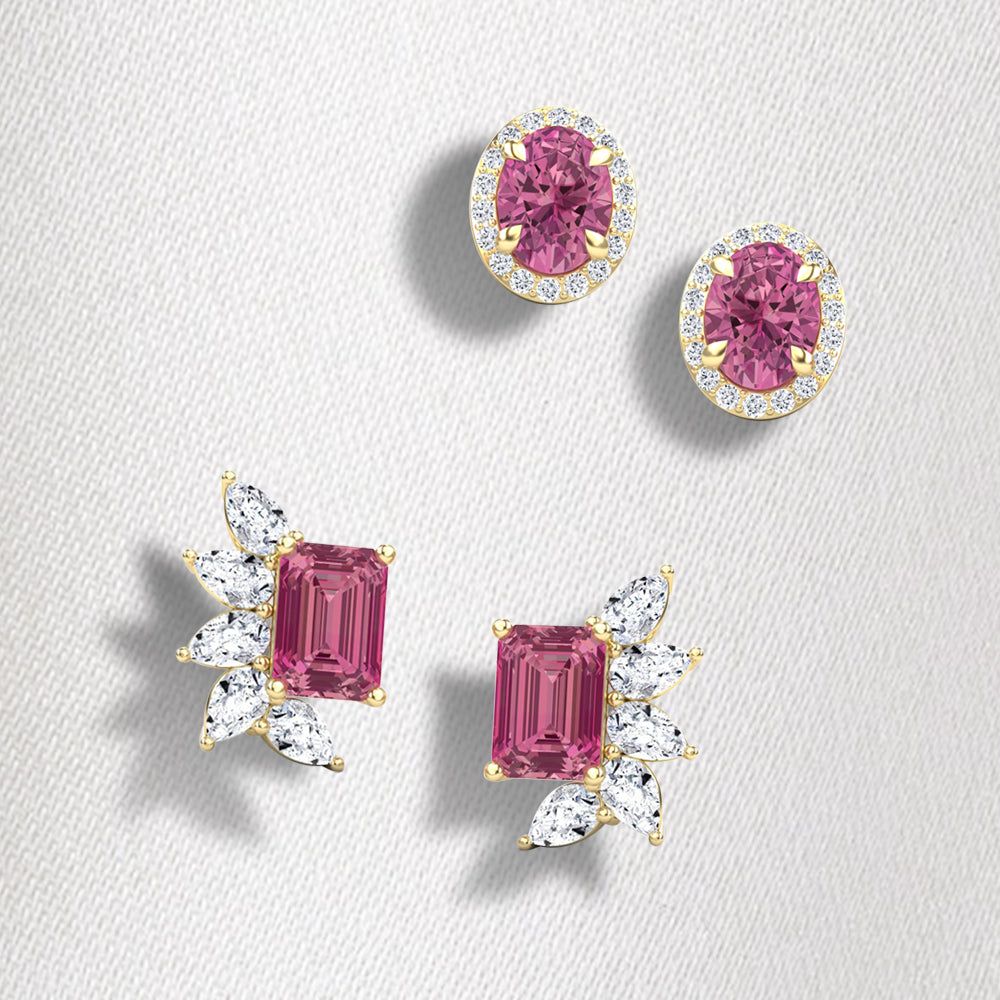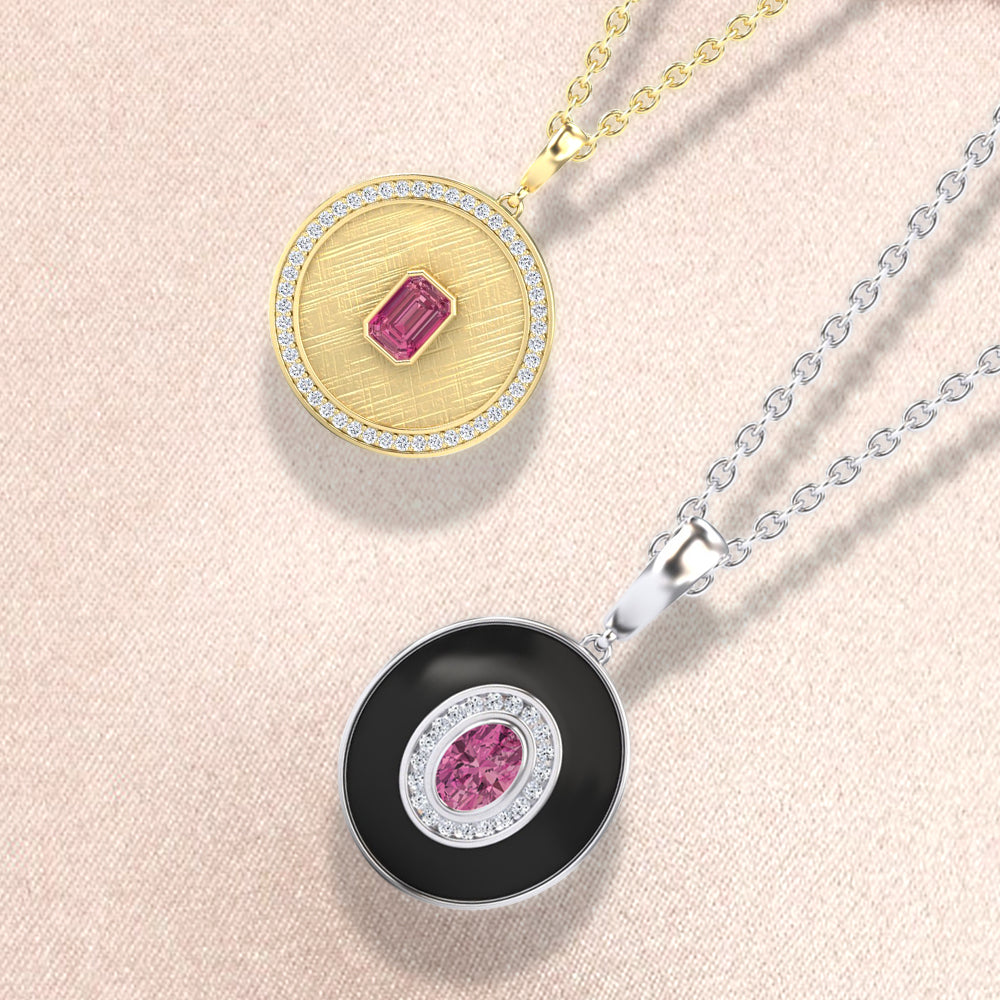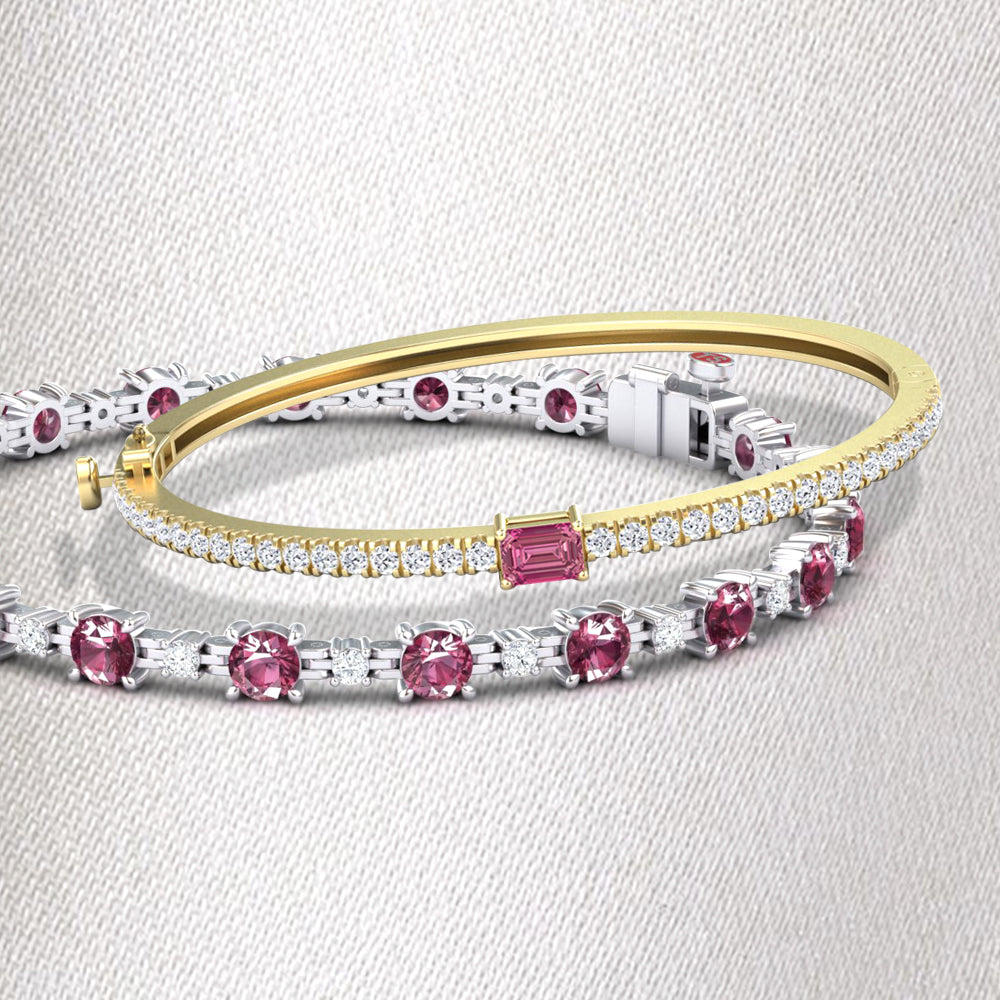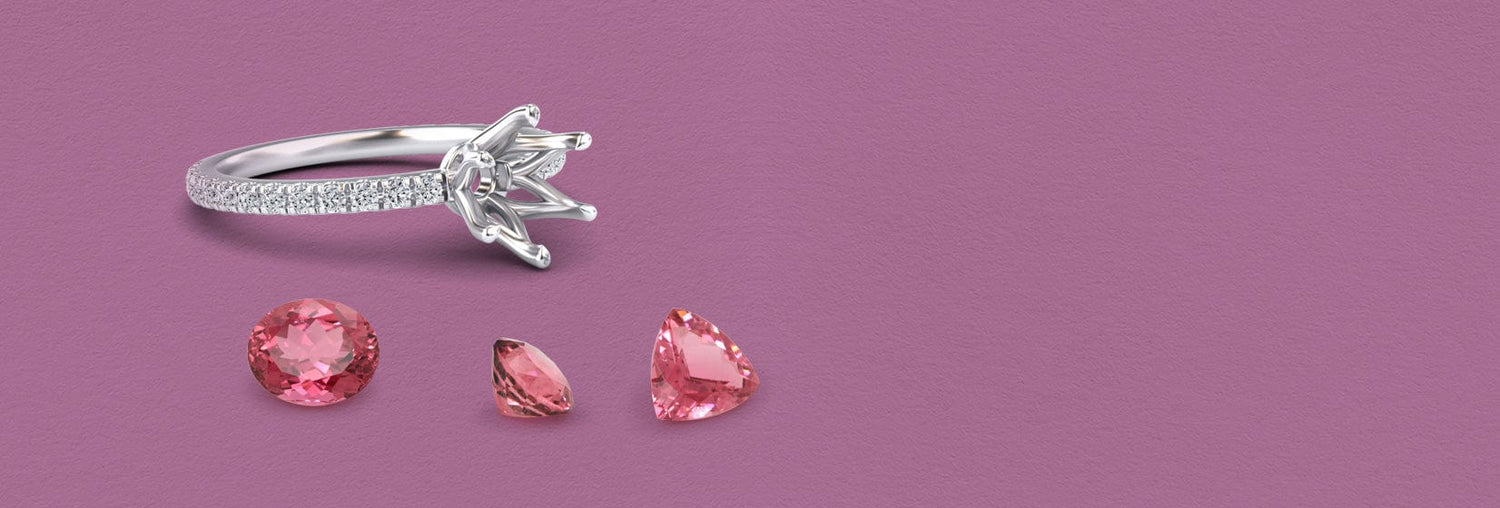Shop By Category

Colors of Tourmaline and Its Origins
Tourmaline is celebrated for its unparalleled diversity of colors, occurring in almost every shade imaginable, from deep greens and vibrant blues to vivid pinks and sunny yellows. It's also famous for exhibiting multiple colors within a single gemstone, such as the distinct pink and green of watermelon tourmaline. These captivating colors are a result of various trace elements present during the gem's formation. Major sources of tourmaline include Brazil, Nigeria, Mozambique, Afghanistan, and the United States (California and Maine), each region often producing stones with characteristic color tendencies.

Taking Care of your Tourmaline Jewelry
Caring for your tourmaline jewelry involves gentle handling to preserve its vibrant colors. Clean tourmaline pieces with warm, soapy water and a soft brush, rinsing them thoroughly. Avoid exposing tourmaline to harsh chemicals or extreme temperature changes, as some varieties can be sensitive. Store your tourmaline jewelry separately in a soft pouch or jewelry box to prevent scratches from harder gemstones. While tourmaline generally has a good hardness (7 to 7.5 on the Mohs scale), it's still wise to remove rings before activities that could cause impact.

Understanding the Pricing of Tourmaline's
Understanding the pricing of tourmaline involves considering its diverse color range as the most significant factor. Vivid and rare colors, such as the electric blues and greens of Paraiba tourmaline or intensely saturated pinks and reds (rubellite), command the highest prices. Bi-colored and parti-colored tourmalines with distinct and appealing color zoning, like fine watermelon tourmaline, are also highly valued. Clarity and size (carat weight) play a role, with larger, eye-clean stones being more expensive. While some origins are historically significant, color and quality generally outweigh origin in determining price for most tourmaline varieties.

Tourmaline Gemstone Meaning
Tourmaline's meaning is as diverse as its colors, with each hue often carrying its own specific symbolism. Generally, tourmaline is considered a protective stone, believed to shield against negative energies and promote self-confidence. It is also associated with grounding and balancing energies, bringing harmony to its wearer. Pink and green tourmalines are often linked to compassion and emotional healing, while black tourmaline is known for its strong protective qualities. This vibrant gem is thought to inspire creativity and bring joy.





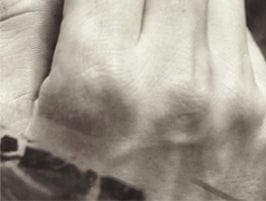

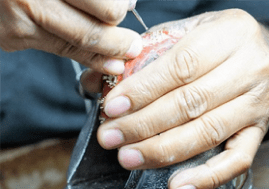


Trust and Transparency while being Sustainable
Stress Free Shopping with full transparency about cost, metals, and our carbon foot print
Tourmaline FAQs
What is fine jewelry?
What is fine jewelry?
Fine jewelry refers to jewelry crafted from precious metals like gold, platinum, or sterling silver and often set with genuine gemstones such as diamonds, sapphires, rubies, or emeralds. Unlike fashion or costume jewelry, fine jewelry is designed to be durable, timeless, and valuable, making it suitable for everyday wear as well as special occasions. It often holds both emotional and financial value, passed down as heirlooms through generations. Because of its craftsmanship and quality, fine jewelry requires proper care and maintenance to preserve its brilliance. It is considered an investment in beauty, luxury, and meaning.
What is the rarest gemstone?
What is the rarest gemstone?
The rarest gemstone in the world is often considered to be painite, a deep brownish-red crystal that was once so scarce only a handful of specimens existed. Other gems like red beryl, alexandrite, and musgravite also rank among the rarest due to their extreme scarcity and limited sources. Rarity depends not only on how hard a gem is to find in nature but also on the quality of color, clarity, and size. Because of their uniqueness, these gemstones often command extraordinary prices in the market. Collectors and jewelry enthusiasts treasure them for their beauty, mystery, and exclusivity.
How are gemstones cut?
How are gemstones cut?
Gemstones are cut through a precise process that transforms rough crystals into sparkling jewels. First, the stone is carefully examined to decide the best shape and orientation for maximizing color, brilliance, and size. It’s then sawed into a workable piece, shaped using grinding wheels, and refined with different abrasives. Facets are added with exact angles to reflect light beautifully, enhancing the gem’s fire and brilliance. Finally, the stone is polished to a mirror-like finish, ready to be set into jewelry. This art of gemstone cutting, called lapidary, requires both skill and patience.
Where can you buy gemstones?
Where can you buy gemstones?
You can buy gemstones from reputable jewelry stores, both online and offline, that specialize in certified gems. Many people also purchase from gemstone dealers, auction houses, or gem shows, where a wide variety of stones are available. Online marketplaces can offer convenience and selection, but it’s important to look for certification and return policies to ensure authenticity. Some travelers buy gemstones directly from mining regions or local artisans, though this requires expertise to avoid imitations. The key is to buy from a trusted source with transparent information about the gem’s origin, quality, and value.


